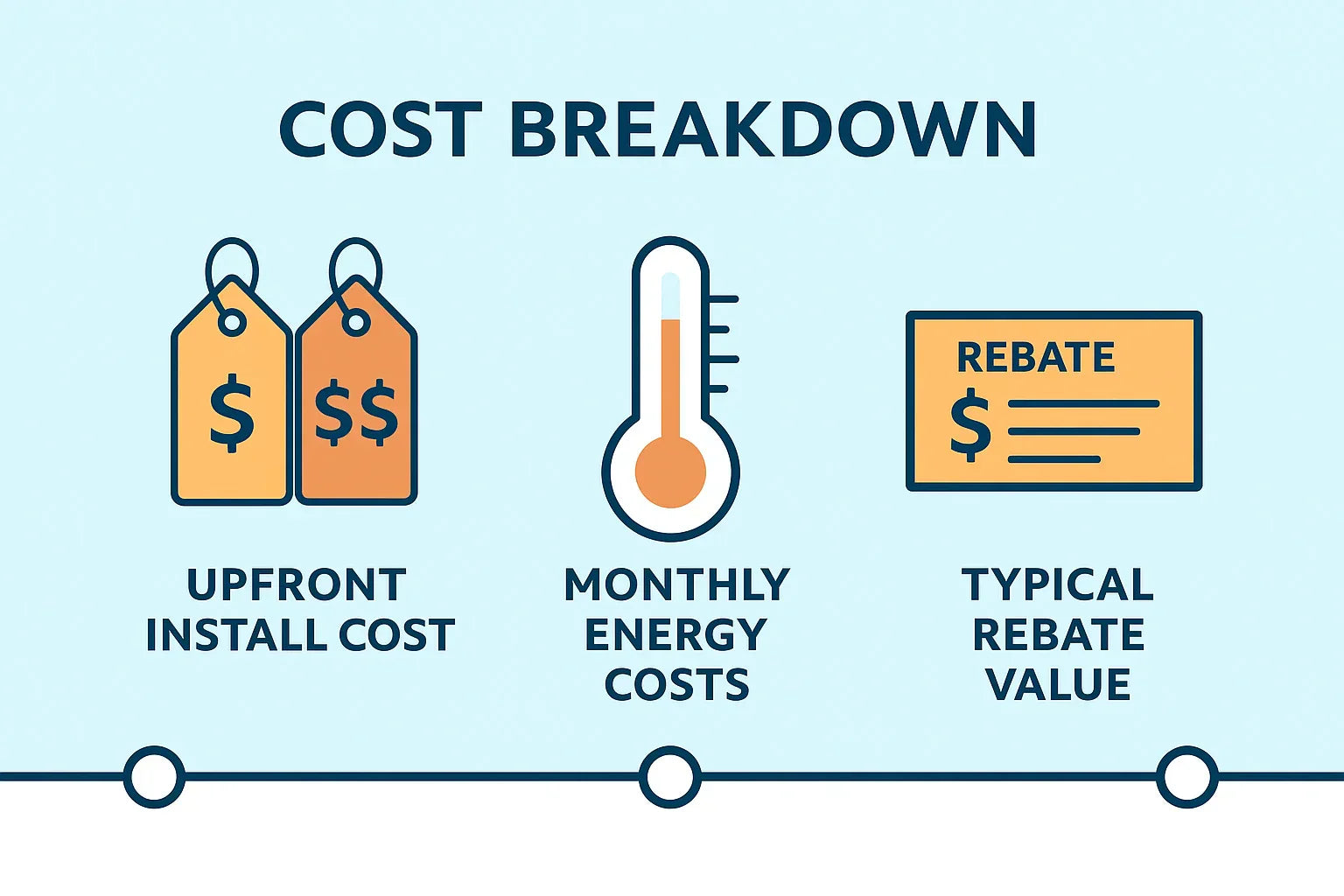By Alex Lane | Your Home Comfort Advocate
Let’s be honest—furnace shopping isn’t the most exciting thing in the world. But choosing between a standard and a high-efficiency furnace can have a big impact on your home comfort and your wallet.
So what’s actually different between the two? Is one always better than the other?
This guide breaks it down in plain English—costs, features, efficiency, and when each one makes sense.
What Sets These Furnaces Apart?
AFUE Ratings and Fuel Efficiency
The biggest technical difference comes down to AFUE—or Annual Fuel Utilization Efficiency.
-
A standard furnace typically has an 80% AFUE rating. That means 20% of the energy you pay for is lost as exhaust.
-
A high-efficiency furnace scores 95% to 98% AFUE, meaning very little fuel goes to waste.
Over time, this difference can translate to hundreds of dollars in annual fuel savings, especially if you live in a cold climate. Energy.gov offers a helpful explanation of how AFUE affects energy use and cost.
Venting and Combustion Differences
Standard models use a metal flue and pull air from inside your home for combustion.
High-efficiency models use:
-
Sealed combustion with PVC venting
-
Outdoor air intake, which improves safety and performance
-
Condensing technology to extract more heat from exhaust gases
This setup makes high-efficiency models safer, quieter, and better for airtight homes.
Key Features Compared
| Feature | Standard Furnace | High-Efficiency Furnace |
|---|---|---|
| AFUE | ~80% | 95%–98% |
| Heat Exchanger | Single | Dual (Primary + Secondary) |
| Blower | Single- or two-stage | Variable-speed, ECM motors |
| Venting | Metal flue | PVC, sealed combustion |
| Smart Thermostat Ready | Sometimes | ✅ Yes |
To see what qualifies as “most efficient,” check out ENERGY STAR’s current list of top-rated furnaces.
Cost Comparison: Upfront vs. Ongoing
Installation Cost Differences
Here’s the catch: high-efficiency furnaces cost more upfront.
-
Standard furnace: $2,500–$4,000 installed
-
High-efficiency furnace: $3,500–$7,500 installed
That $1,000–$3,000 difference includes upgraded venting materials, sealed combustion chambers, and sometimes more complex labor.
However, if you qualify for tax credits or rebates, you could shrink that gap significantly. The IRA Savings Calculator from Rewiring America is a great place to estimate your incentive eligibility.
Monthly Utility Savings
With a higher AFUE rating, you’ll burn less fuel to get the same warmth. That can lead to real savings on your utility bill—$150 to $500+ per year, depending on home size and fuel prices.
To find additional savings, use the DSIRE database to explore rebates offered by your state or utility company.
Which One Makes Sense for Your Home?
Best Situations for High-Efficiency Furnaces
You’ll get the best return on investment from a high-efficiency furnace if:
-
You live in a cold climate with long heating seasons
-
Your fuel costs are high (e.g., propane or oil)
-
Your home is larger or poorly insulated
-
You plan to stay 7+ years in your home
The more your furnace runs, the more you save. The EPA’s Heating Degree Days data helps you understand how long your furnace typically works based on your region.
When a Standard Furnace Still Works Just Fine
Not every home needs the Cadillac of heating systems.
Stick with standard efficiency if:
-
You live in a mild climate (e.g., parts of the South or West Coast)
-
You’re heating a small or energy-efficient home
-
You’re on a tight budget
-
You plan to move in a few years
In these cases, you might not see enough usage to justify the upgrade. And that’s okay—sometimes simple is smart.
Summary Table: Standard vs. High-Efficiency
| Category | Standard Furnace | High-Efficiency Furnace |
|---|---|---|
| AFUE | ~80% | 95–98% |
| Upfront Cost | Lower | Higher |
| Energy Use | More fuel needed | Lower fuel bills |
| Best for | Mild climates, rentals | Cold climates, long-term homes |
| Rebate Eligible? | Rarely | ✅ Frequently |
| Payback Time | N/A | 5–10 years |
Want to See the Long-Term Numbers?
Still on the fence? The next post in this series breaks it all down:
👉 How Much Can a High-Efficiency Furnace Save You Per Year?
We’ll show you how fuel type, square footage, and climate zone affect your actual dollars saved per year—and when it pays off.
💬 Final Thoughts from Alex Lane
There’s no one-size-fits-all answer when it comes to choosing a furnace. Some homeowners are better off going high-efficiency now to lock in long-term savings. Others can keep it simple and save the cash upfront.
If you’re still weighing your options, start here: 👉 High-Efficiency Furnaces: Worth the Investment?
It’s got everything you need to make an informed choice—without the sales pitch.
Stay warm,
Alex Lane
Your Home Comfort Advocate







